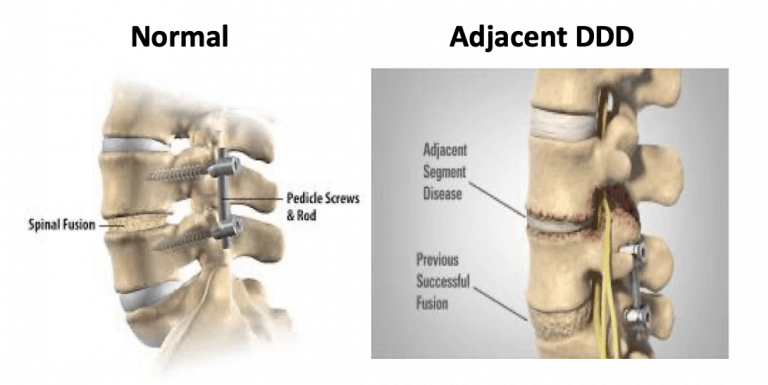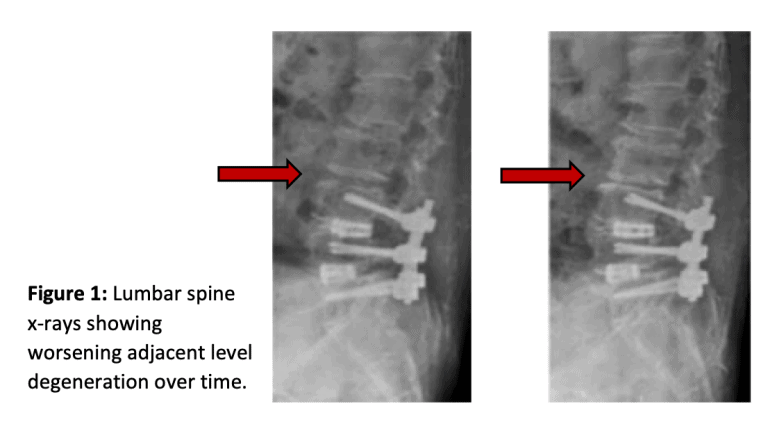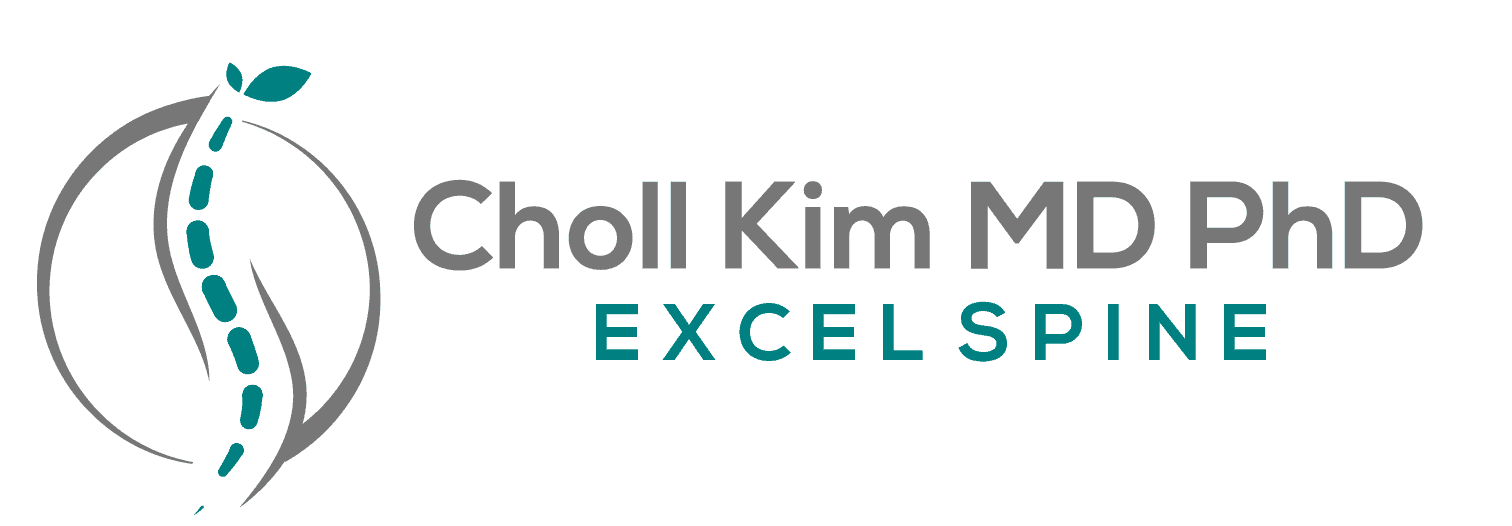What is Adjacent Level Degeneration?
Adjacent Level Degeneration is a condition that can occur after spinal fusion surgery. When two or more vertebrae are fused together to stabilize the spine, that segment loses its natural ability to move. As a result, the spinal segments directly above and below the fusion must work harder to make up for the lost mobility. Over time, this added stress can lead to faster wear and tear in those adjacent areas, resulting in degenerative changes such as disc bulges, herniated discs, facet joint arthritis, or spinal stenosis.
What Causes Adjacent Level Degeneration?
Adjacent Level Degeneration typically develops as a result of the biomechanical stress placed on the levels above or below a spinal fusion. Other contributing factors may include natural aging, previous injuries, a lack of regular physical activity, and smoking. In some cases, genetics or returning to intense physical activities too soon after surgery can also increase the risk of developing adjacent level degeneration.
What Are the Signs and Symptoms of Adjacent Level Degeneration?
Common symptoms of adjacent level degeneration include pain near the site of the previous spinal fusion, stiffness, and reduced mobility. Patients may also experience radiating pain, numbness, tingling, or weakness in the arms or legs, depending on the location of the degeneration. These symptoms often develop slowly and may worsen over time.


Who Is at Risk for Developing Adjacent Level Degeneration?
People who have undergone a multi-level spinal fusion, or who return to strenuous physical activity too soon after surgery, may be at a higher risk of developing adjacent level degeneration. Other risk factors include smoking, poor posture, a sedentary lifestyle, obesity, and underlying conditions like osteoporosis. The size and location of the fusion, as well as the overall spinal alignment, also play a role in increasing the risk.
How Is Adjacent Level Degeneration Diagnosed?
Diagnosing adjacent level degeneration usually begins with a review of your medical history and a physical exam. Your spine specialist may order imaging tests such as X-rays, MRI scans, or CT scans to assess spinal alignment, look for disc or joint damage, and evaluate the integrity of the previous fusion. In some cases, diagnostic injections may be used to identify the exact source of pain.
What Are the Treatment Options for Adjacent Level Degeneration?
In many cases, adjacent level degeneration can be managed without surgery. Non-surgical treatments may include physical therapy to strengthen the core and support the spine, pain-relieving medications, and alternative therapies like acupuncture or chiropractic care. Epidural steroid injections may also be used to reduce inflammation and help relieve pain.
If non-surgical treatments do not provide enough relief and the condition significantly affects your daily life, surgical treatment may be considered. This may involve extending the fusion to include the newly degenerated level or, in some cases, performing motion-preserving procedures like artificial disc replacement. At Excel Spine, we specialize in minimally invasive surgical techniques that help preserve healthy tissue and reduce the risk of future adjacent level problems.
Can Adjacent Level Degeneration Be Prevented?
While adjacent level degeneration isn’t always preventable, certain steps can lower the risk. Choosing minimally invasive surgery, when appropriate, can help preserve the spine’s supporting muscles and reduce stress on nearby segments. Maintaining a healthy lifestyle—including regular exercise, a strong core, good posture, and avoiding smoking—can help support spinal health. It’s also important to follow your surgeon’s post-operative recovery guidelines and avoid high-impact activities during the healing process.
What Happens If Adjacent Level Degeneration Is Left Untreated?
If left untreated, adjacent level degeneration may lead to chronic pain, progressive nerve compression, and a decreased ability to move or perform daily activities. Over time, untreated degeneration can result in permanent nerve damage or disability. Early diagnosis and treatment can prevent these complications and help patients return to a more active, pain-free lifestyle.
Are There Other Conditions Related to Adjacent Level Degeneration?
Adjacent Level Degeneration can resemble or occur alongside other spinal conditions, such as degenerative disc disease, spinal stenosis, facet joint syndrome, spondylolisthesis (slipping of a vertebra), and failed back surgery syndrome (FBSS). Your spine specialist will perform a thorough evaluation to determine the exact cause of your symptoms and recommend an appropriate treatment plan.
Key Takeaways About Adjacent Level Degeneration
Adjacent Level Degeneration is a condition that sometimes develops after spinal fusion surgery due to increased stress on nearby spinal segments. It can lead to pain, stiffness, and nerve-related symptoms, but in many cases, it can be managed with non-surgical treatments. Minimally invasive surgery may reduce the risk of adjacent level degeneration and provide relief when conservative treatments are not effective. Maintaining a healthy lifestyle and staying proactive about your spinal health can also help prevent or manage Adjacent Level Degeneration.
What Should You Do Next?
If you’ve had a spinal fusion in the past and are now experiencing new or worsening symptoms such as back or neck pain, numbness, tingling, or reduced mobility, it may be time to speak with a spine specialist. Early evaluation is important to determine whether adjacent level degeneration—or another spinal condition—is contributing to your discomfort.
A specialist can perform a thorough assessment, review your imaging, and discuss your symptoms to help create a treatment plan that fits your needs. In many cases, conservative care such as physical therapy or medication can provide relief. If symptoms persist, your doctor may recommend advanced imaging or discuss surgical options with you.
Staying informed, listening to your body, and seeking timely care are important steps in managing your spine health and preventing further degeneration.

